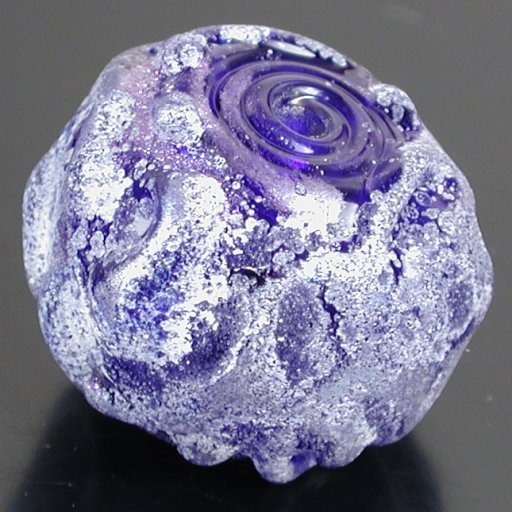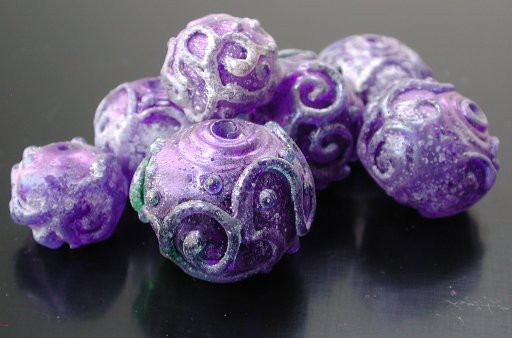‘Antique-ing’ in this context means applying two surface coatings: baking soda and pixie dust. The question then becomes, which first? Instinct told me the pixie dust should probably go on first, and that's how I make 99% of these beads. But just to check, I finally tried reversing the order of application.
As it happens, cobalt blue glass shows transparent and translucent effects such as antiqueing very well, since it's a dark color, so it would have been an ideal subject for the experiment.

Obviously I went to town rolling the sample-shot bead in baking soda —possibly even rolling it in soda first.
Obviously plain glass is ‘stickier’ than stuff that's already been rolled in either pixie or soda—and since the pixie is more subtle, I therefore assumed I'd want more of that, as I eventually confirmed by testing. And though the bead above matches my memory of my baking-soda-first experiment, it's been over a year since I made the beads; so I can't guarantee whether this bead was the exact subject, or just matches my now-faded memory of it.

The group shot shows a more typical version of the technique: a hollow bead trailed with transparent aqua stringer (it's available premade in the Effetre palette in 2-3mm thickness, and I had a fair amount of it lying around) rolled first in hilite purple, then baking soda. This is not at all a difficult technique to do, but to get the shifting color of the hilite pixie dust, you do have to almost cook it—though that is better illustrated in some of the other colors, notably bronze.
file created 08jun05; reworked 29nov05; beads 2004
Unless otherwise noted, text, image and objects depicted therein copyright 1996--present sylvus tarn.
Sylvus Tarn